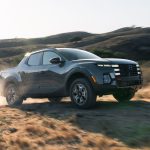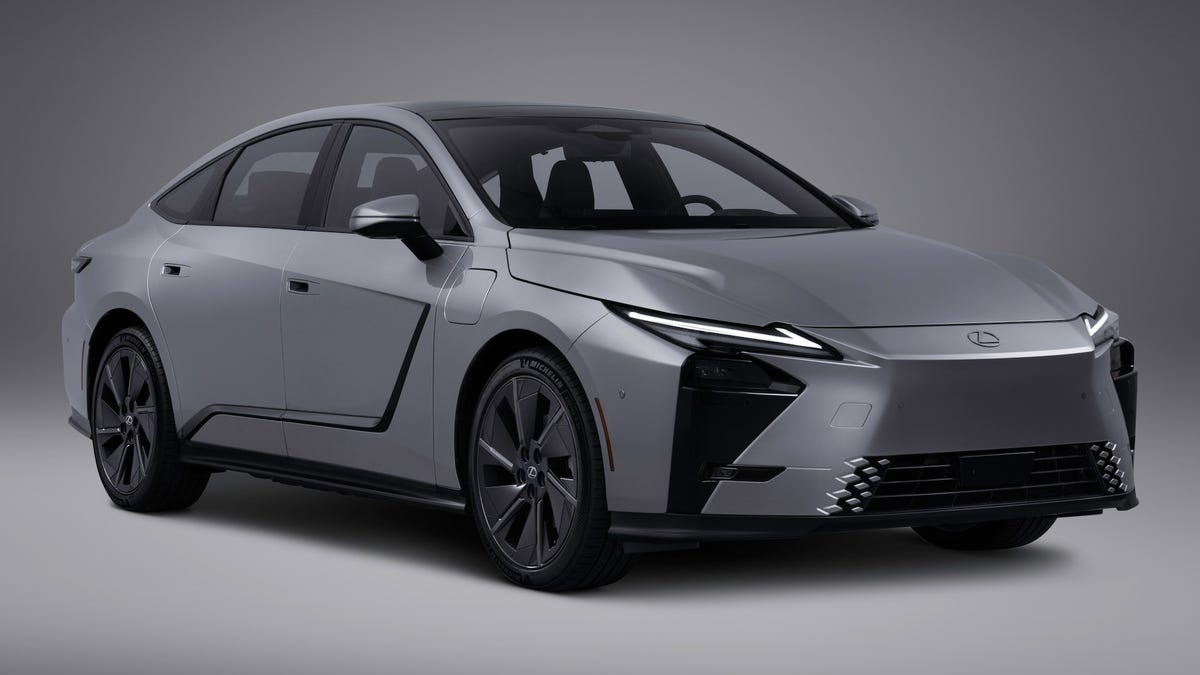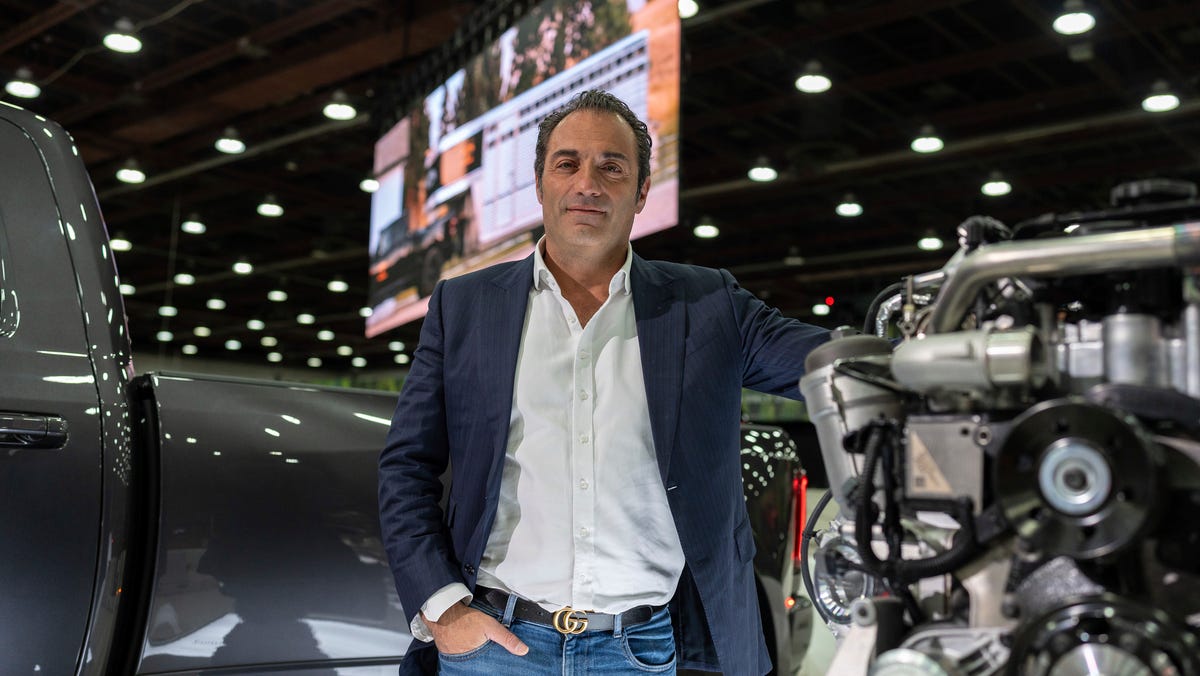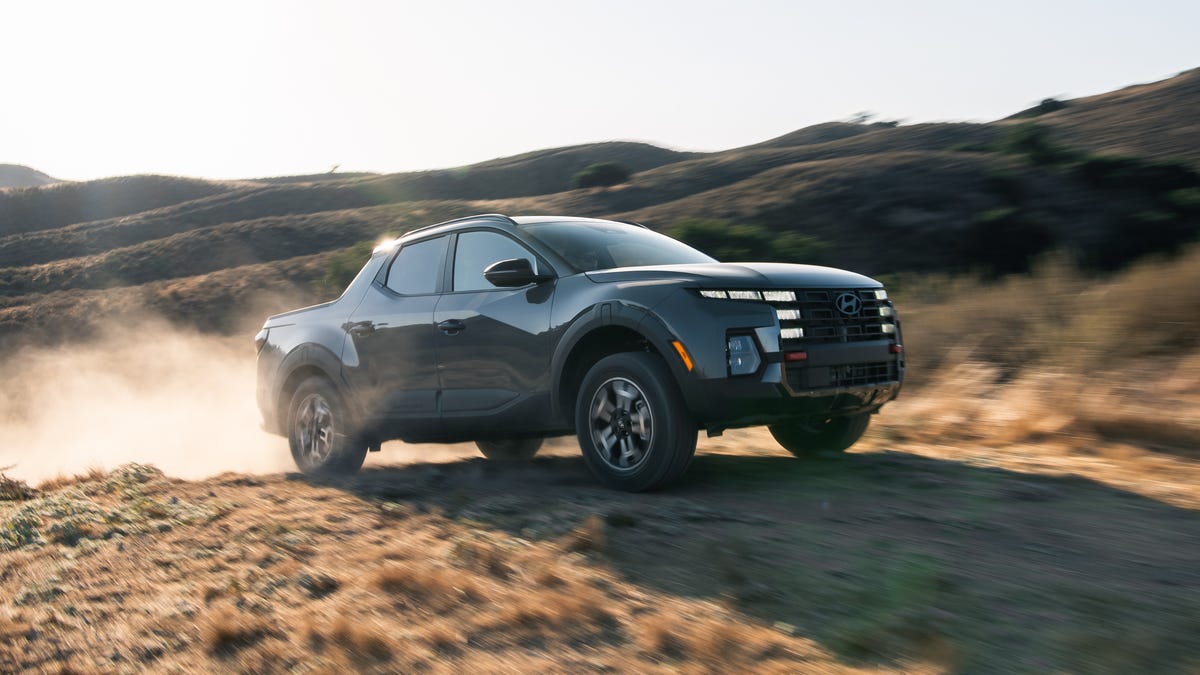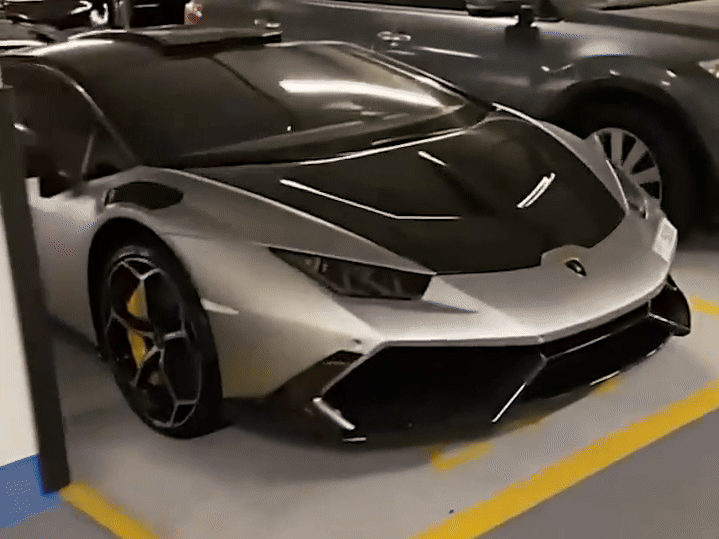
Car enthusiasts stumble upon ‘insane’ number of luxury vehicles in Dubai garage
Two car enthusiasts explored what was described as a “hidden” garage containing dozens of luxury vehicles in Dubai, video shows. Andrew Elgamil, also known as @flaexus, told Storyful a friend living in the Downtown Dubai building, located above the parking lot, let the men into the garage.
Lexus might be a mostly SUV-focused brand these days, with a packed lineup that moves up from the entry-level UX through the NX, RX, three-row TX, and then to the off-road GX and LX models. But even if there are two Lexus-badged SUVs for every Lexus-badged car, the ES sedan remains an anchor product in the family alongside the popular RX crossover.
It was one of the first Lexus nameplates ever, debuting more or less at the same time as the splashier original LS400 in 1989, and although the large midsize sedan might fade into suburban backdrops across America, that’s largely because of its ubiquity. Lexus sells a healthy number of them annually, with more than 40,000 finding new driveways last year — and that was the seventh-generation ES’s sixth year on sale.
Soon, a new ES will be on sale, and you’re looking at it. This is the 2026 Lexus ES, which made its big debut on the other side of the world at the 2025 Shanghai Auto Show last month, now has U.S.-specific details to go with it. If you thought ES sedans were boring and purchased by old people or golfers, then the new ES probably looks like it’d land amongst the country-club set like Rodney Dangerfield’s bright-red Rolls-Royce convertible from Caddyshack.
In reality, though, each ES has looked younger and fresher; the outgoing model introduced in 2019 is already subtly sexy, with a long, low profile and undulating curves saucy enough to make you forget the more staid 1990s and 2000s versions. So even if the 2025 ES was still an isolation machine designed for quiet, trouble-free operation, old people (or whoever you think is buying an ES) don’t get to corner the market on reliable, luxurious, and low-key attractive sedans, do they?
Within that context, the new ES isn’t such a wild departure from the current model — at least, not stylistically. The full-width taillight, sharp corner elements and pointy lighting are adapted from 2023’s LF-ZC concept car, although the overall shape is less Blade Runner and more, well, outgoing ES sedan. We think it looks generally attractive, with a little more edge than the 2019–2025 ES, a lot less grille, and with racy bodyside sculpting we might need to get used to. And given the market direction sedans are taking of late — generally, they’re aiming for a sportier or sexier vibe, to justify skipping the SUVs everyone else seems to want these days — the ES’s new look seems not only appropriate, but smart.
Hybrid or electric, take your pick
It’s what is underneath that new body that marks the real departure for Lexus’s midsize luxury sedan. That’s because this is the first mainstream Lexus to be designed as a “dual-platform vehicle,” as Lexus puts it, with both internal-combustion-engine and all-electric variants sharing a body.
This concept isn’t new — BMW, a competitor, has been selling dual-purpose ICE/EV cars for a few years now, including the i4/4 Series Gran Coupe, i5/5 Series and i7/7 series — but it’s a first for Lexus, and the first Toyota product since the third-generation RAV4 (which offered a Tesla-powered electric setup) to pull off the engineering feat of packaging one platform for multiple powertrain styles.
Details are sketchy so far, but the 2026 ES sits on what sounds like a newer version of the old ES’s TNGA-K platform, adapted for those ICE and EV powertrains. Lexus has scaled the car up, as few new vehicles are smaller than those they replace, but here it’s probably to make room for enough batteries under the ES’s floor to deliver competitive driving range.
The wheelbase is stretched by a massive 3.1 inches to 116.1, and overall length balloons from 195.9 inches to an LS-challenging 202.3. Width is up 2.1 inches, as well, while critically the ES’s height rises by several inches, depending on which 2025 and 2026 ES models you’re comparing. This is key because, while today’s ES is a rather large vehicle with a spacious back seat, headroom isn’t overly generous; and when you add batteries into a car’s floor, that floor tends to rise — potentially shrinking vertical cabin space unless the roof is higher.
So we’re optimistic Lexus was able to keep or improve on the current ES’s headroom (the company notes how “the seating position has been set higher to improve ease of entry and exit, while also providing a wide field of vision,” all but confirming as much), by making the car taller overall. Similarly, the newest ES’s move to a multilink rear suspension from a strut-type setup is also surely for packaging flexibility and lowering the rear suspension’s profile.
The EV will surely be more powerful
While the forms of propulsion have expanded, Lexus has held the line on choice: Like before, you can pick from two powertrains, though now each with or without all-wheel drive. Only instead of a gas V-6 or a hybrid four-cylinder engine, the 2026 ES gives buyers the choice of a 2.5-liter four-cylinder hybrid, as well as single- or dual-motor all-electric power.
Similar to before, the hybrid is named ES350h (last year’s was the ES300h). If you can’t spot the ES350h badge on the trunk lid, a good tell that you’re looking at the hybrid are the extra grille openings in the otherwise smooth, body-color nose.
It once again is based around a 2.5-liter four-cylinder engine, with dual electric motors helping out (one a motor/generator, the other a larger electric drive motor); only this time, it’s available with all-wheel drive. Like other modern Toyota and Lexus hybrids, this is accomplished using a third electric motor mounted separately on the rear axle, delivering on-demand all-wheel drive and a little overall power boost on launches.
Lexus says a front-wheel-drive ES350h will deliver 243 hp overall, and specifies the same output for the all-wheel-drive model. (The smaller Toyota Camry that uses the same basic setup, albeit with less power, delivers 225 hp in front-drive form and 232 hp with AWD.) In our testing, we’ve found that, in Toyota products that utilize similar setups yet share output figures between front- and all-wheel-drive models, the all-wheel-drive models are typically a little quicker. Accordingly, Lexus thinks the same, and estimates that the all-wheel-drive ES350h will be 0.2 second quicker to 60 mph, reaching the speed in 7.2 seconds.
The all-electric 2026 Lexus ES wears a totally smoothed-over snoot and will bear the ES350e and ES500e monikers, the former with single-motor front-wheel-drive and the latter with dual-motor all-wheel drive. The power figures provided are mostly the same as those for Toyota’s recently updated bZ (formerly bZ4X) electric SUV: 221 hp for the single-motor, front-wheel-drive ES350e and 338 hp for the dual-motor, all-wheel-drive ES500e.
Disappointingly, those figures trail the performance delivered by the also-updated-for-2026 Lexus RZ electric SUV, the bZ’s luxurious twin, which pushes out 224 hp in front-drive form, 380 hp in dual-motor form and 408 hp in dual-motor F Sport guise.
Lexus says the front-drive ES350e is capable of up to 300 miles of range when equipped with the smallest of its wheel choices, a 19-inch fitment. The dual-motor ES500e cuts 50 miles off that peak range, for a just-okay 250 miles. No battery specifics have been offered so far, but we wouldn’t be shocked if the electric ES models came powered by the same 74.7-kWh battery used in the new bZ — though it’s possible Lexus installs the larger 77-kWh unit from the RZ (though we’d figure if they did, the ES would make similar power…).
Regardless, the battery is charged via a NACS (North American Charging System, SAE J3400-style) plug, meaning it’s compatible with Tesla Superchargers. Lexus claims the battery can be topped off (from 10 to 80 percent) via a DC fast charger in as little as 30 minutes. The onboard 11-kW AC charger will make the most of the latest Level 2 home chargers, as well.
Leaning harder into luxury
Not only is the outgoing ES already somewhat attractive, it’s supremely refined and comfortable, a worthy payoff for its un-sporty front-wheel-drive-based underpinnings (in a class filled with rear-drive stuff like BMW’s 5 Series and Mercedes-Benz’s excellent E-Class). This is a car that’s become synonymous with oozing quietly down freeways, and Lexus hints that the 2026 ES will pamper even more, despite its more modern, minimalist vibe inside.
Besides the longer wheelbase potentially smoothing the ride even further, Lexus says the ES’s structure is stiffer, cutting down noise pathways and vibrations. And you don’t need us to remind you that all-electric vehicles tend to operate more quietly than internal-combustion machines (or, at least, their powertrains do).
Building on the ES’s luxury credibility, Lexus will offer a two-rear-seat Executive package in the U.S. with reclining, a passenger-side footrest, seat massagers and heating and ventilation. This setup, which is more common on one-size up, full-size sedans than midsize luxury models, will be offered on the ES350e Luxury trim.
The rest of the cabin will be suitably richly appointed, with suede materials, strategically placed ambient lighting, and even “a special coating” that “enhances surface quality.” There is screenage, of course: a 12.3-inch all-digital gauge cluster and a 14-inch touchscreen with Apple CarPlay, Android Auto, dual-Bluetooth phone pairing capability, and built-in navigation. Again, it’s surprising how pared-back the ES’s cabin appears — this is not traditional, old-world luxury. Lexus also is striking new ground here, with “Lexus” embossed in the steering wheel hub in place of the brand’s “L” logo; minimalist surfaces; and no obvious cuts of wood anywhere.
We’re intrigued by what we see so far, if only because it’s great to see a sedan is being redesigned with even more expressive styling and bolder powertrain options, and not simply killed off or replaced by an SUV. Of course, the ES is no mere sedan — it’s a popular luxury model core to Lexus in America.
Photos by MotorTrend, manufacturer




